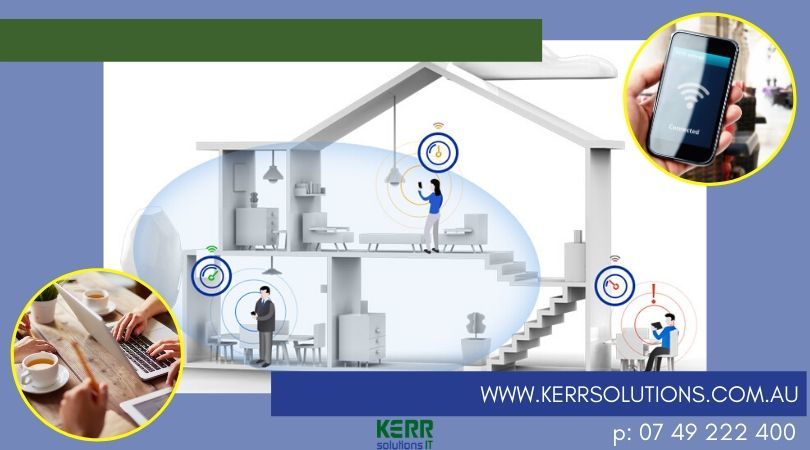– Invisible Connections 2
As a follow up to last weeks’ article on wireless connections we will try to wrap up the subject this week. We have already talked about Satellite Internet, 3G, 4G 4GX, 5G and NBN Fixed Wireless Internet connections. All these connections are designed to get an Internet signal to your premises. Today we will cover wireless connections between devices inside your house or short-range connections between 2 close houses or buildings.
All the already talked about Wireless Internet connections will bring an Internet signal to some sort of modem/router in your premises. How do you then get this signal to different devices within the house? The later is either done via an Ethernet cable – running directly between the device and the modem/router or via Wi-Fi.

Most ISP supplied modem/routers have a Wi-Fi component built in. This takes the Internet signal that is being delivered to the modem/router and ‘broadcasts’ it around the users’ premises to devices that are Wi-Fi compatible. These devices were typically laptops, tablets and smart phones; however this list also includes smart TV’s, many fridges, washing machines, home entertainment systems, solar power systems – the list is growing every year!
The regular downside of Wi-Fi around your house is the lack of signal strength in areas that are not close to the modem/router. This often causes the Internet connection to get blamed for a lack of speed when it is simply the fault of a weak Wi-Fi signal within the house. Different devices such as power point connected signal transmission devices and wireless range extenders have attempted to address these range limitations, however most of these solutions have been of dubious worth.
Installing a dedicated long-range Wireless Access Point (WAP) can often provide a perfect fix in the above situation. These devices connect to the modem/router via Ethernet cable, plug into power and send a strong Wi-Fi signal to every corner of the house. All Wi-Fi devices work on a frequency of either 2.4GHz or 5GHz with the limitation described from last week – 2.4GHz gives more range but less potential throughput speed and 5GHz is the reverse of this.
A Wi-Fi signal can be used for communications directly between devices – such as Wi-Fi direct for printing and for many of the ‘wireless’ keyboard and mouse devices that are now commonplace. We can also ‘join’ buildings that have a line-of-sight between them (even up to 10kms apart) with Wi-Fi devices and good external antennas. We have done this on many farms to provide fast and secure communications between computer devices in different buildings.
Another form of wireless communication between devices is Bluetooth. Despite the unique name this is just another form of wireless communication for devices to talk to each other. Bluetooth ability is now built-in to most modern laptops, smart phones, smart TV’s and many devices such as mice and keyboards. It has a very limited range of around 10 meters and is also limited in bandwidth. If you have the option between connecting 2 devices using Wi-Fi or Bluetooth the Wi-Fi format is the best choice here.
Because of their low power transmission none of the wireless systems that we have talked about here have been found to cause health problems with their users and most of us would now struggle to carry on with life-as-we-know-it without their use.
Suggestions for future articles can be emailed to [email protected] and Bruce is contactable at Kerr Solutions, 205 Musgrave Street or on 49 222 400.

We have developed a brilliant self-help troubleshooting section on our website – so if you are having computer problems, but can still browse the web, please check it out. Click here to go to Kerr Solutions IT Troubleshooting
For more advice and assistance from Kerr Solutions, like and follow us on Facebook
Staying at home but need IT support?
Phone Kerr IT to gain expert computer support.
Call now on 49 222 400
So you can Delete your computer problems…. and stay safe!
Kerr Solutions IT are open for business as usual and as well as providing phone / remote control support we can also pick up your problem PC via your doorstep & return it all sorted – or return a complete replacement PC.
Please phone us on 07 49 222 400 during business hours for help, support and sales or email us [email protected]
